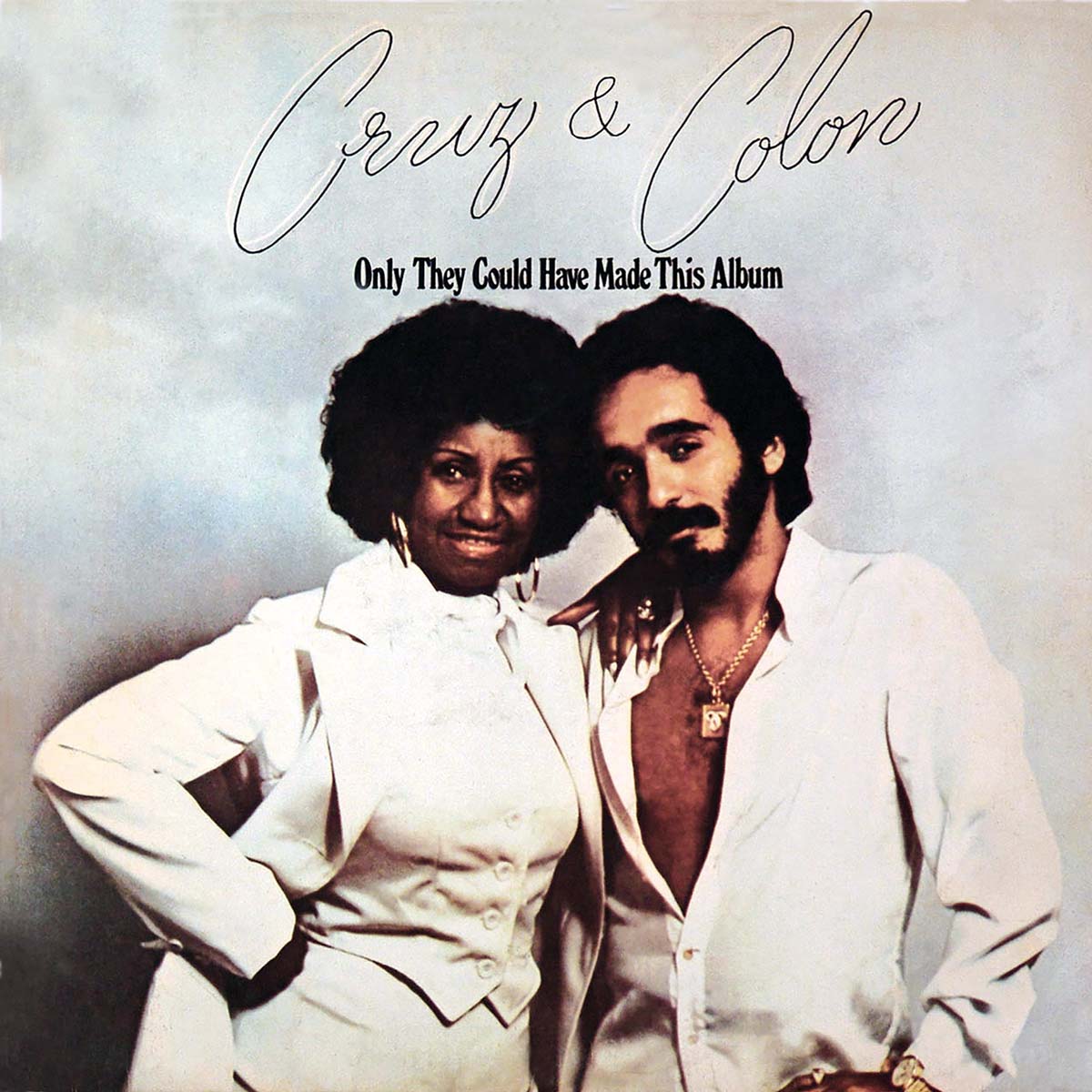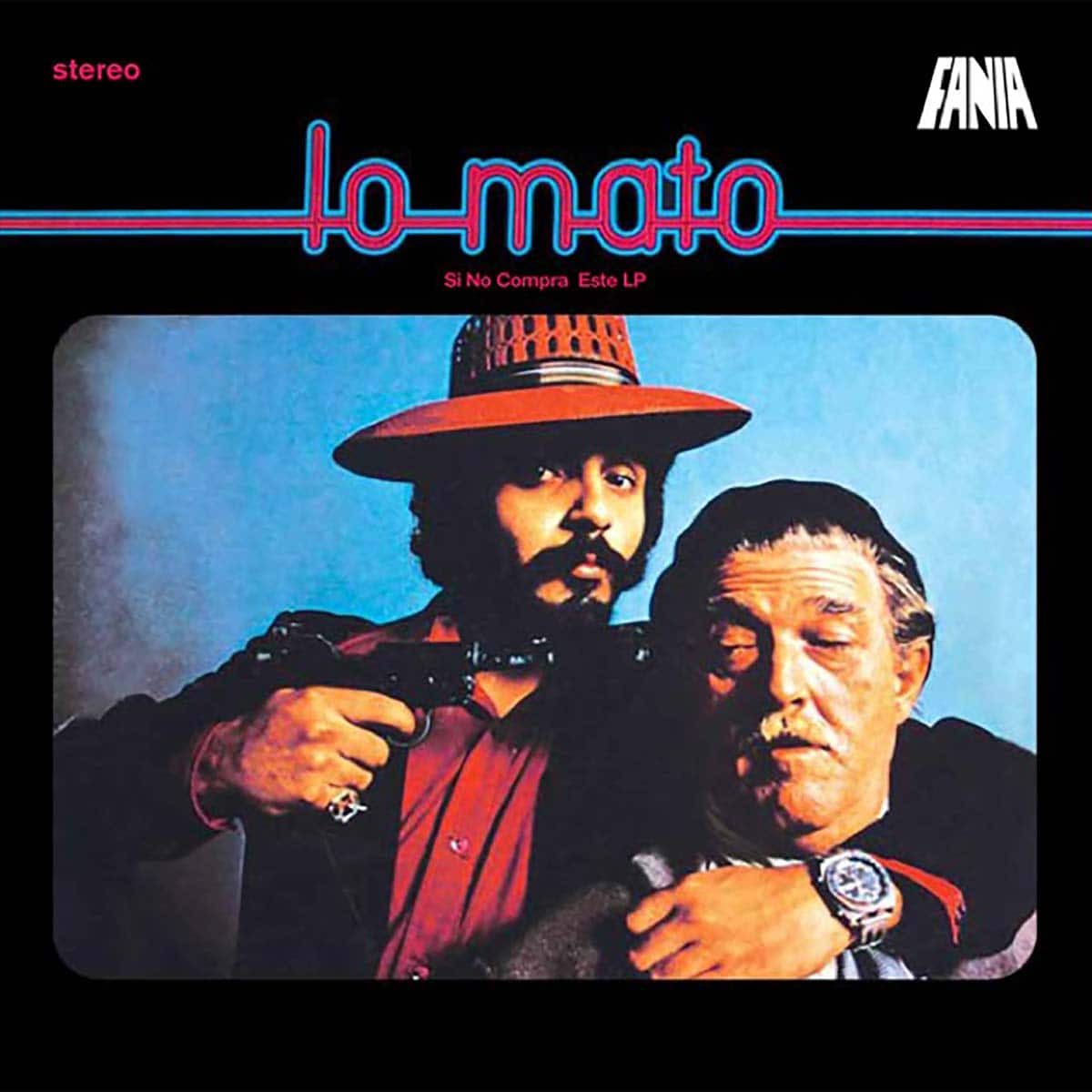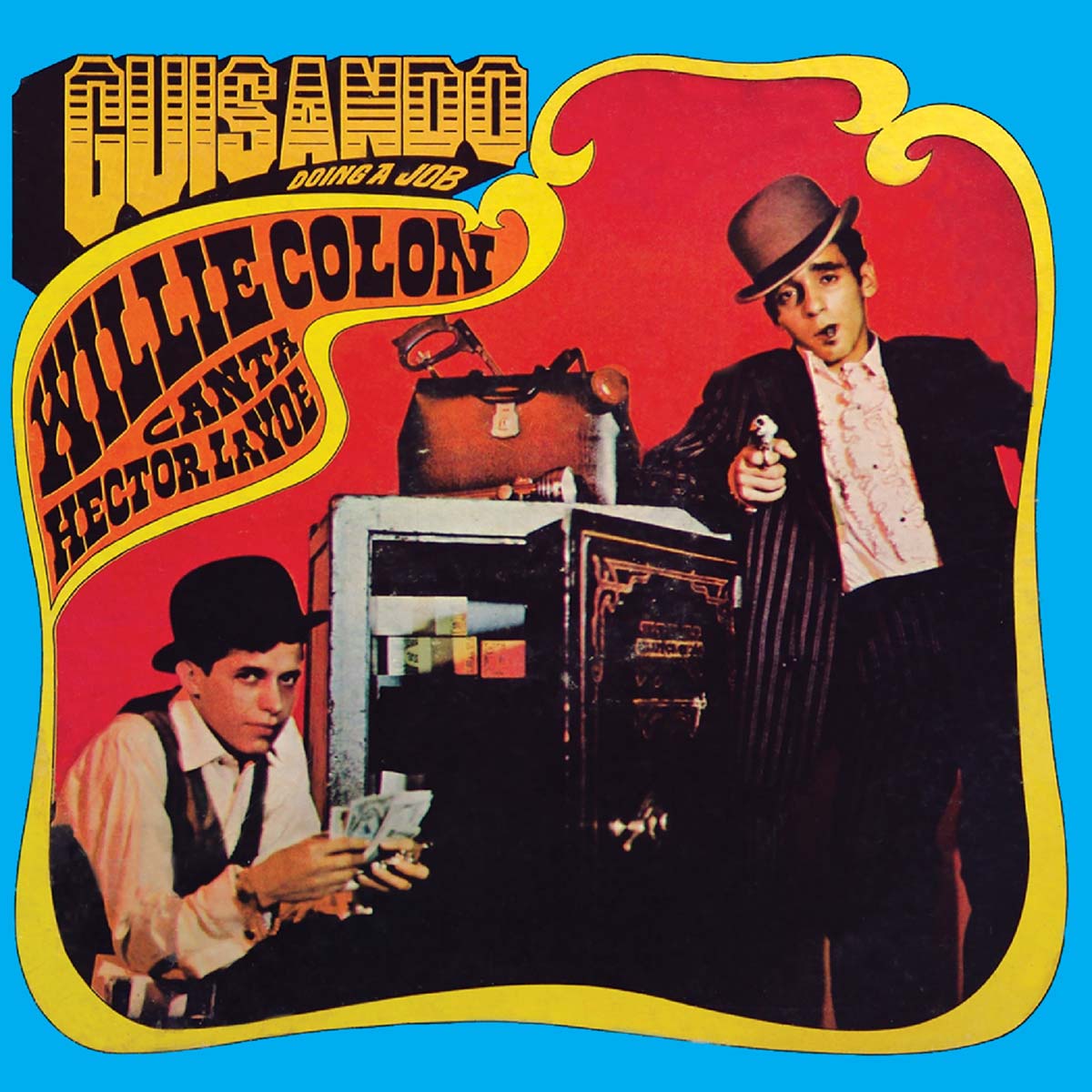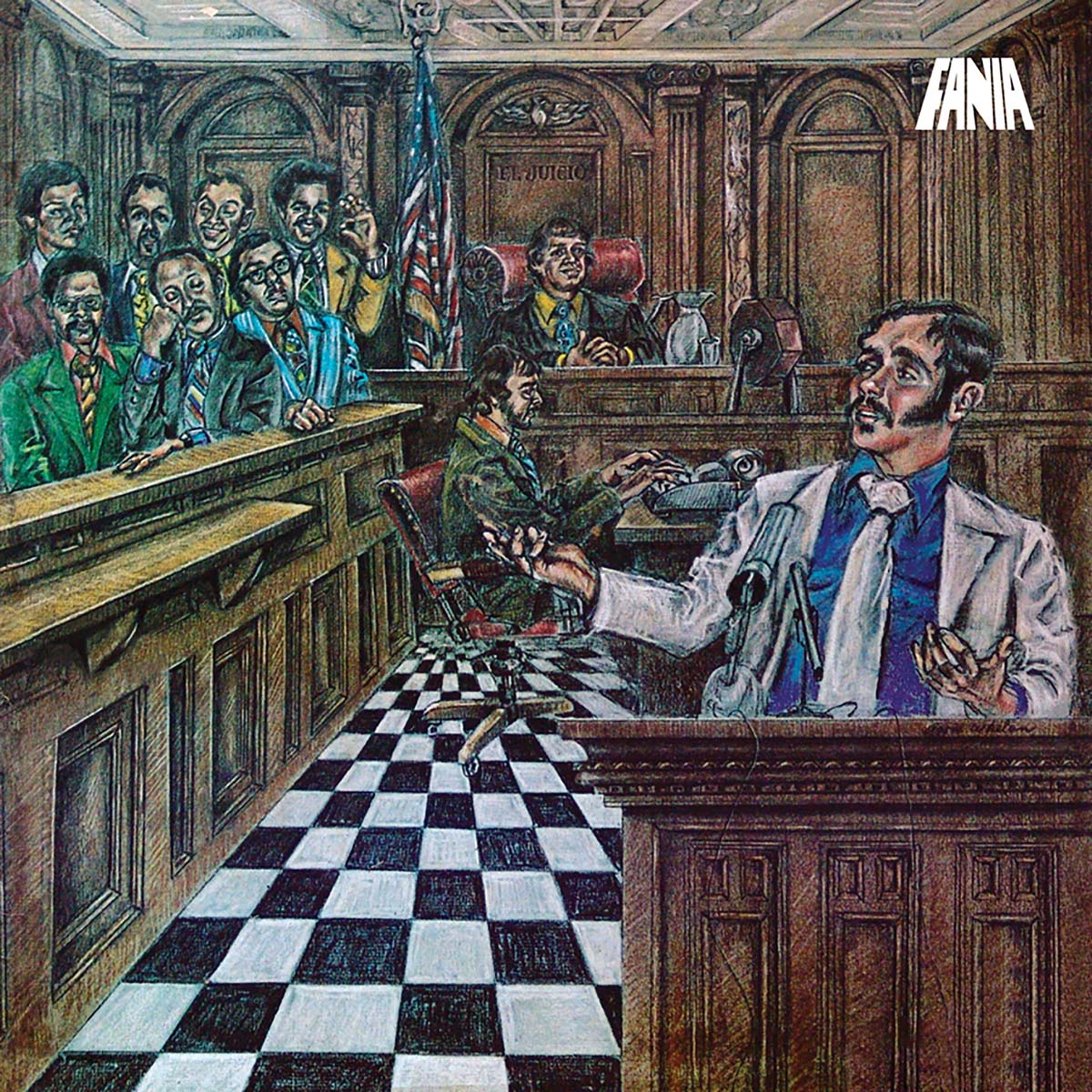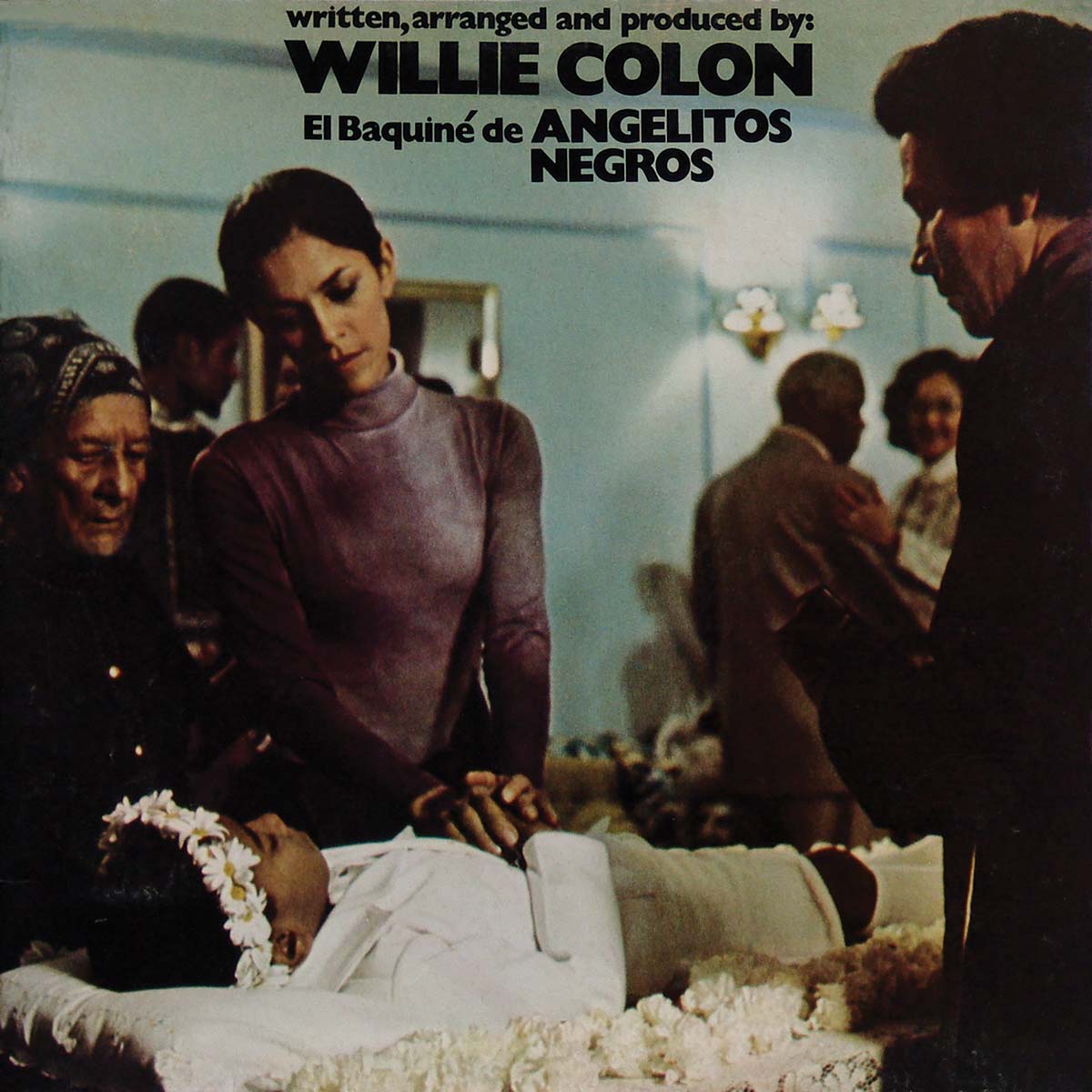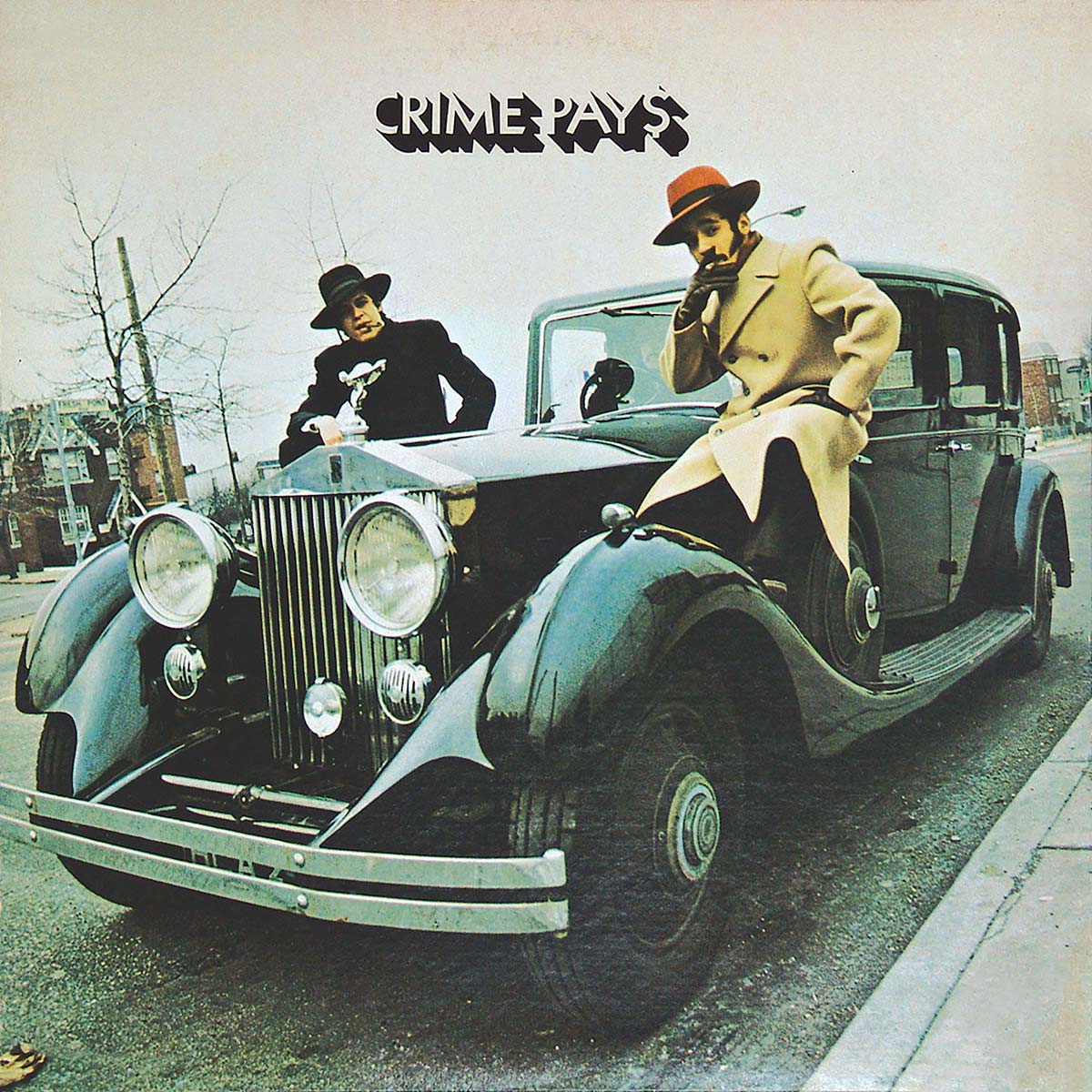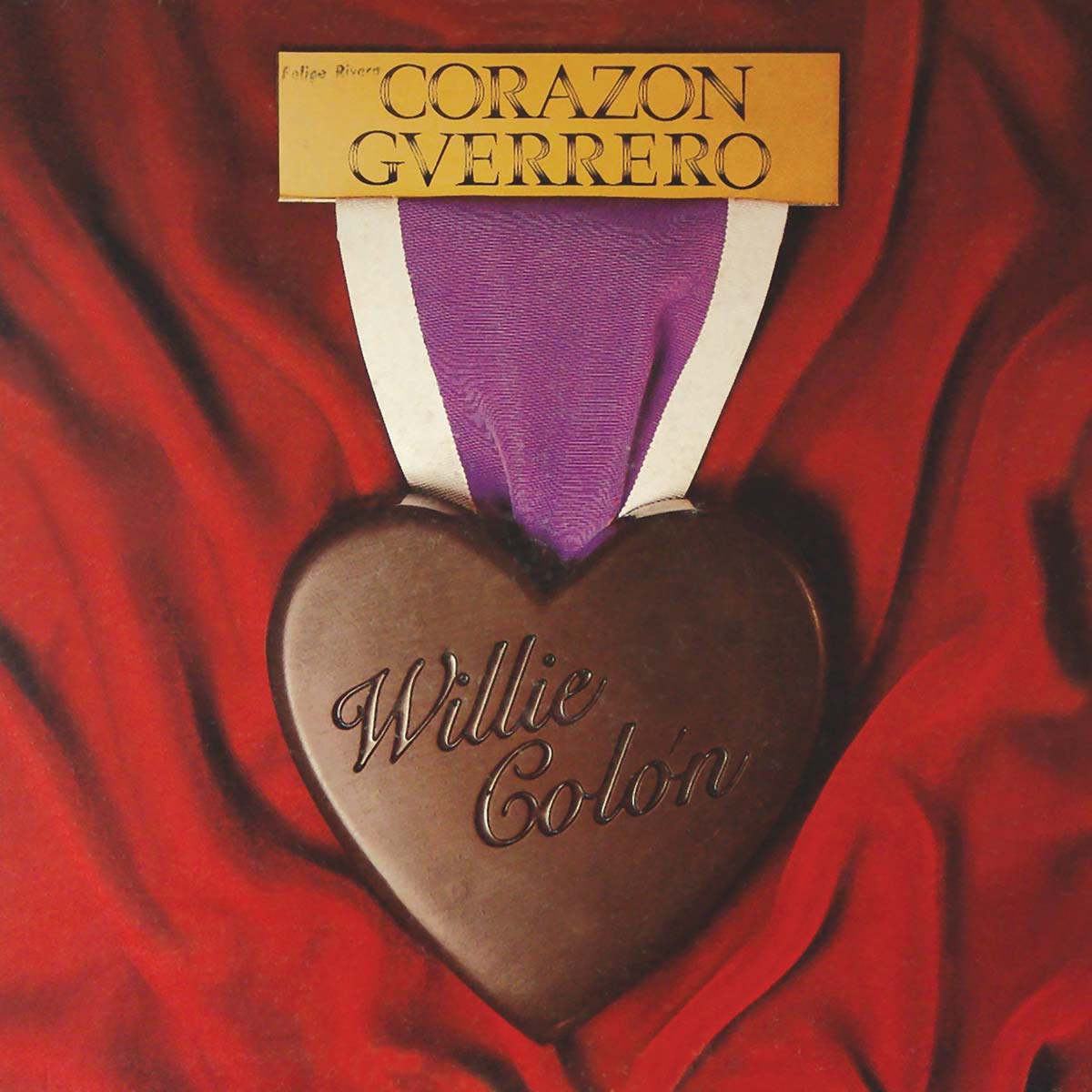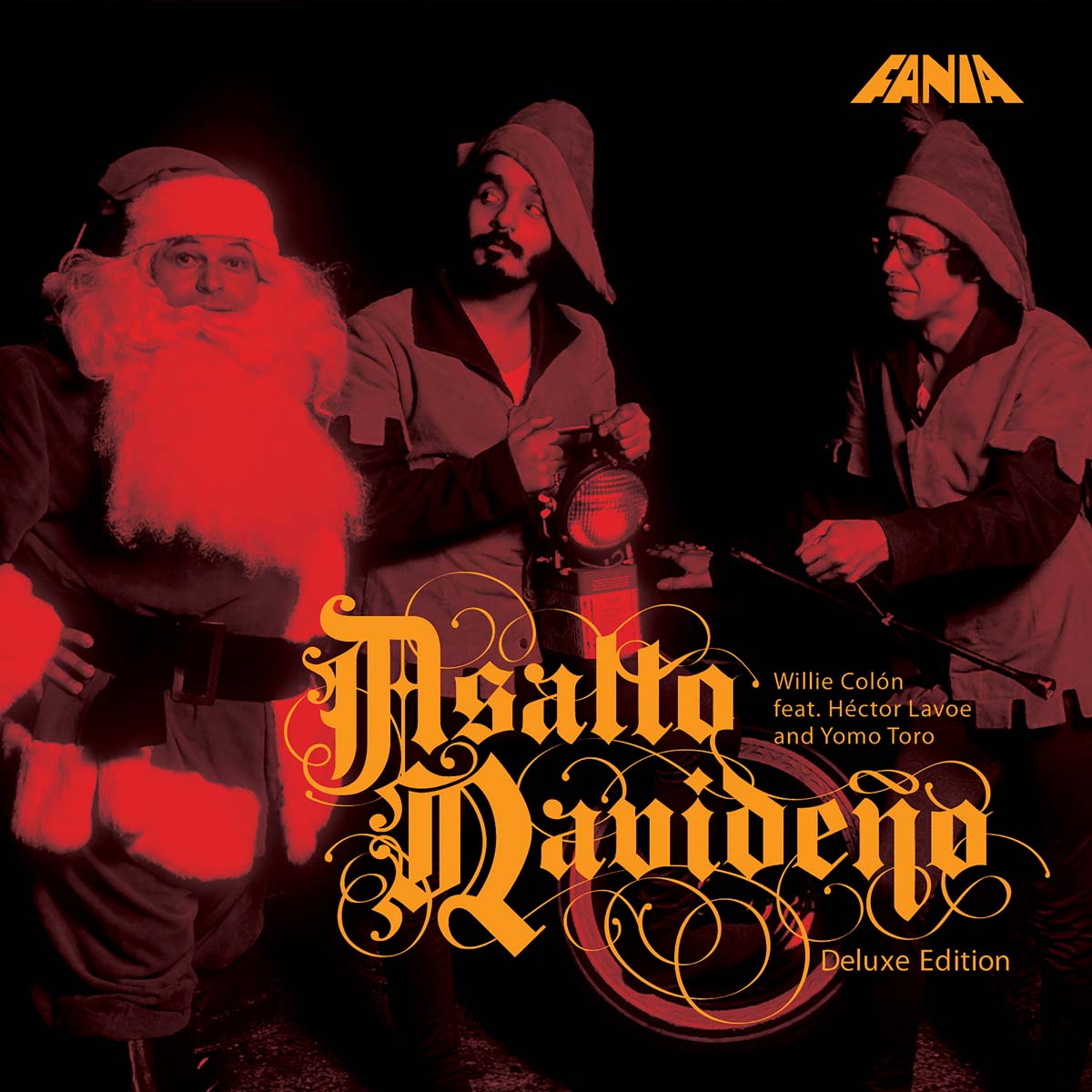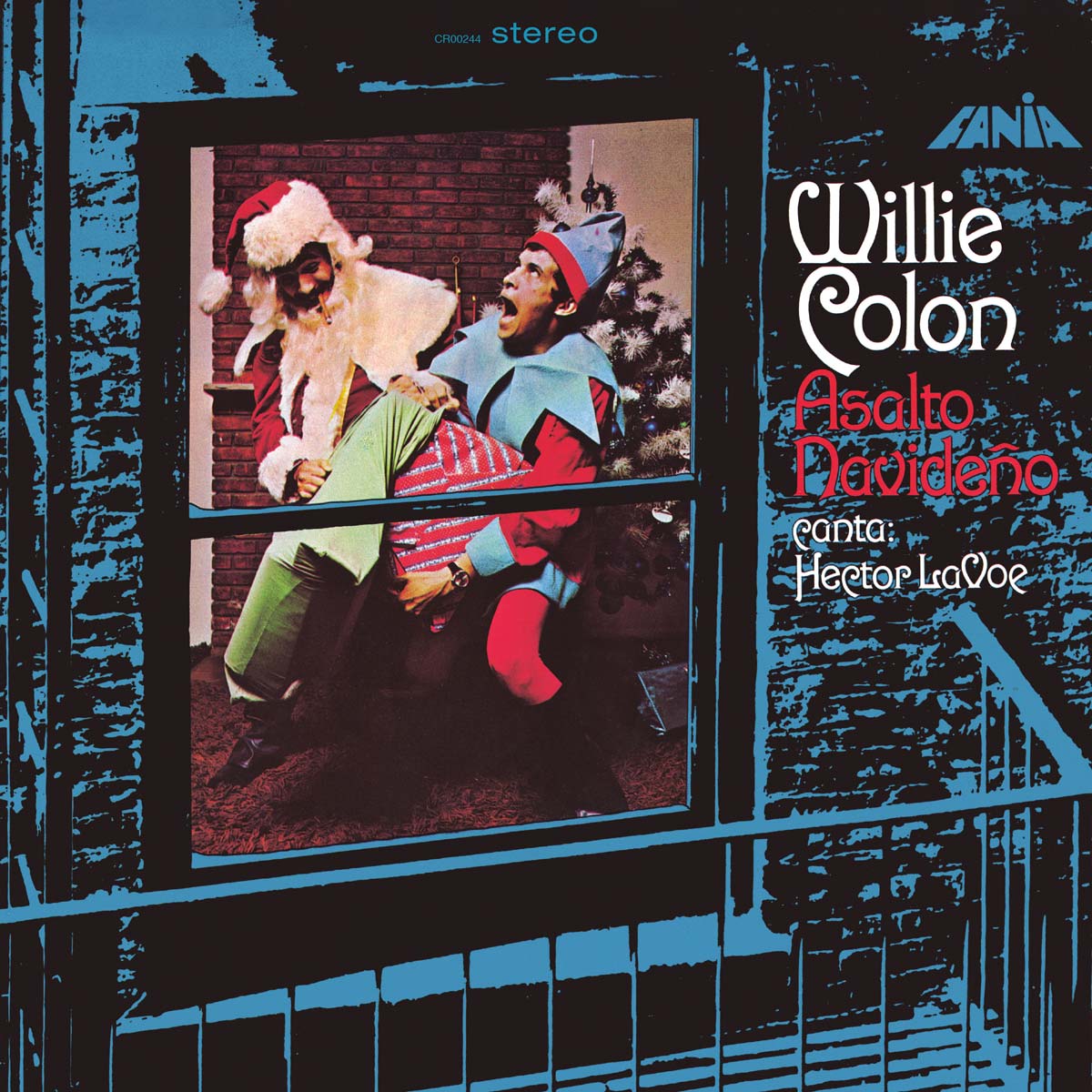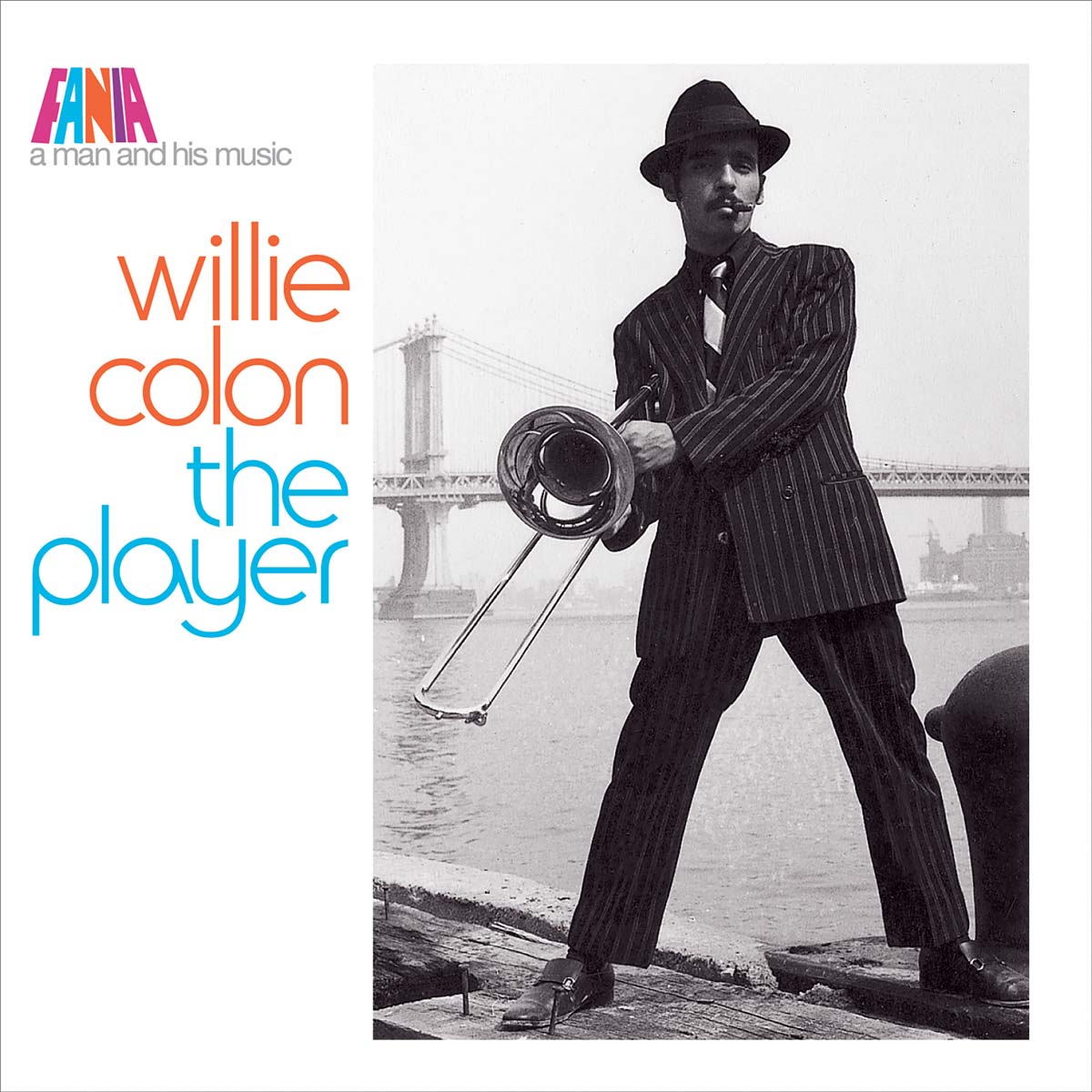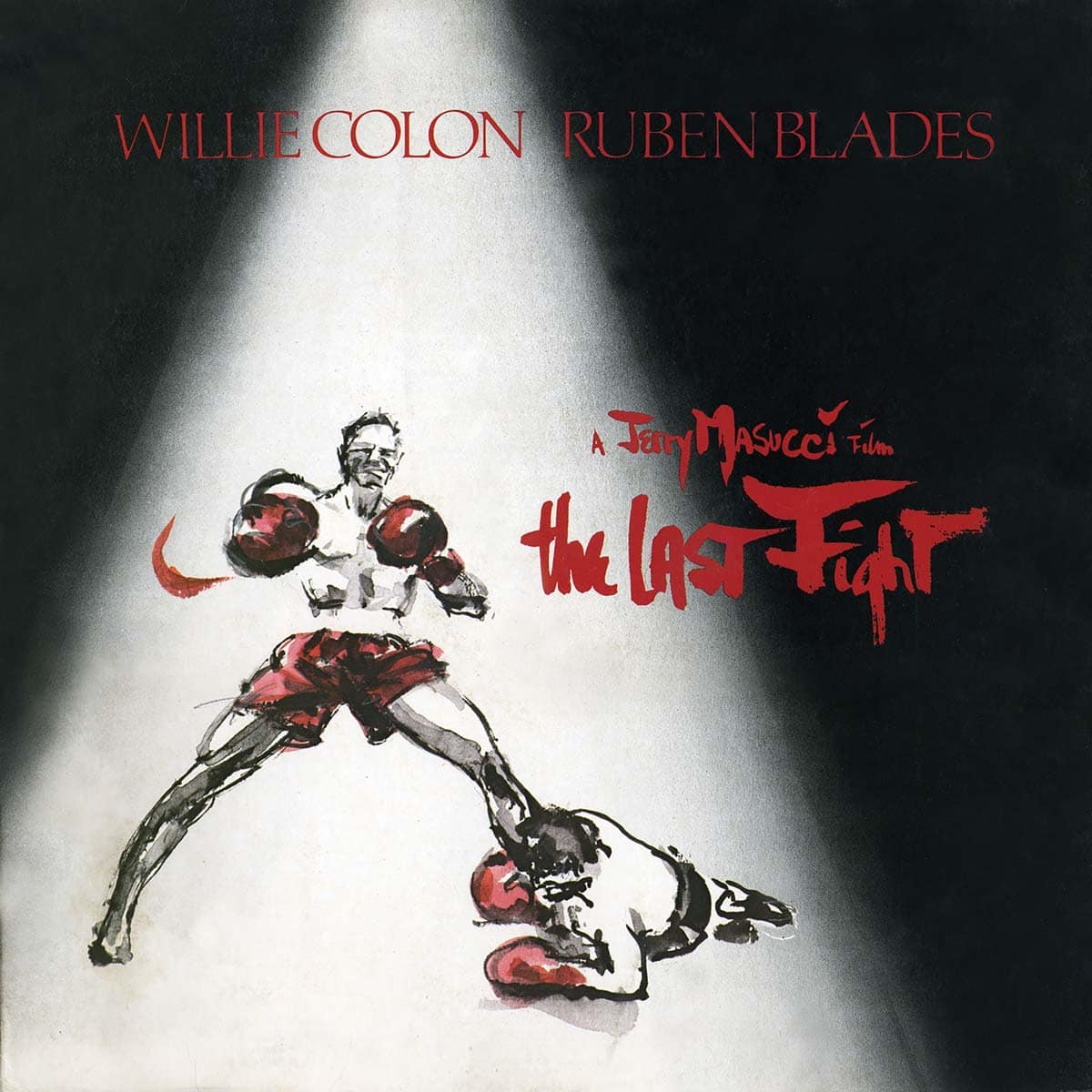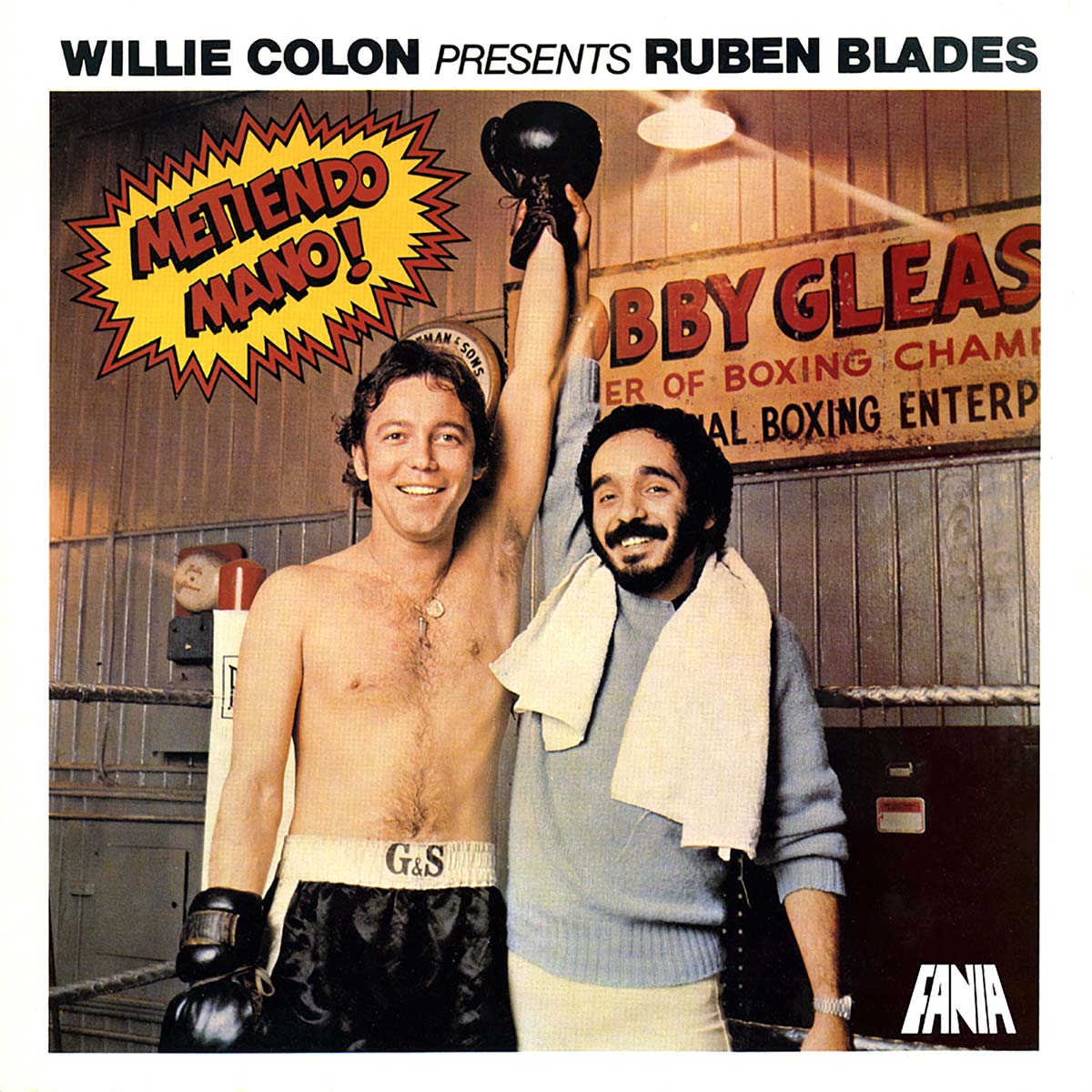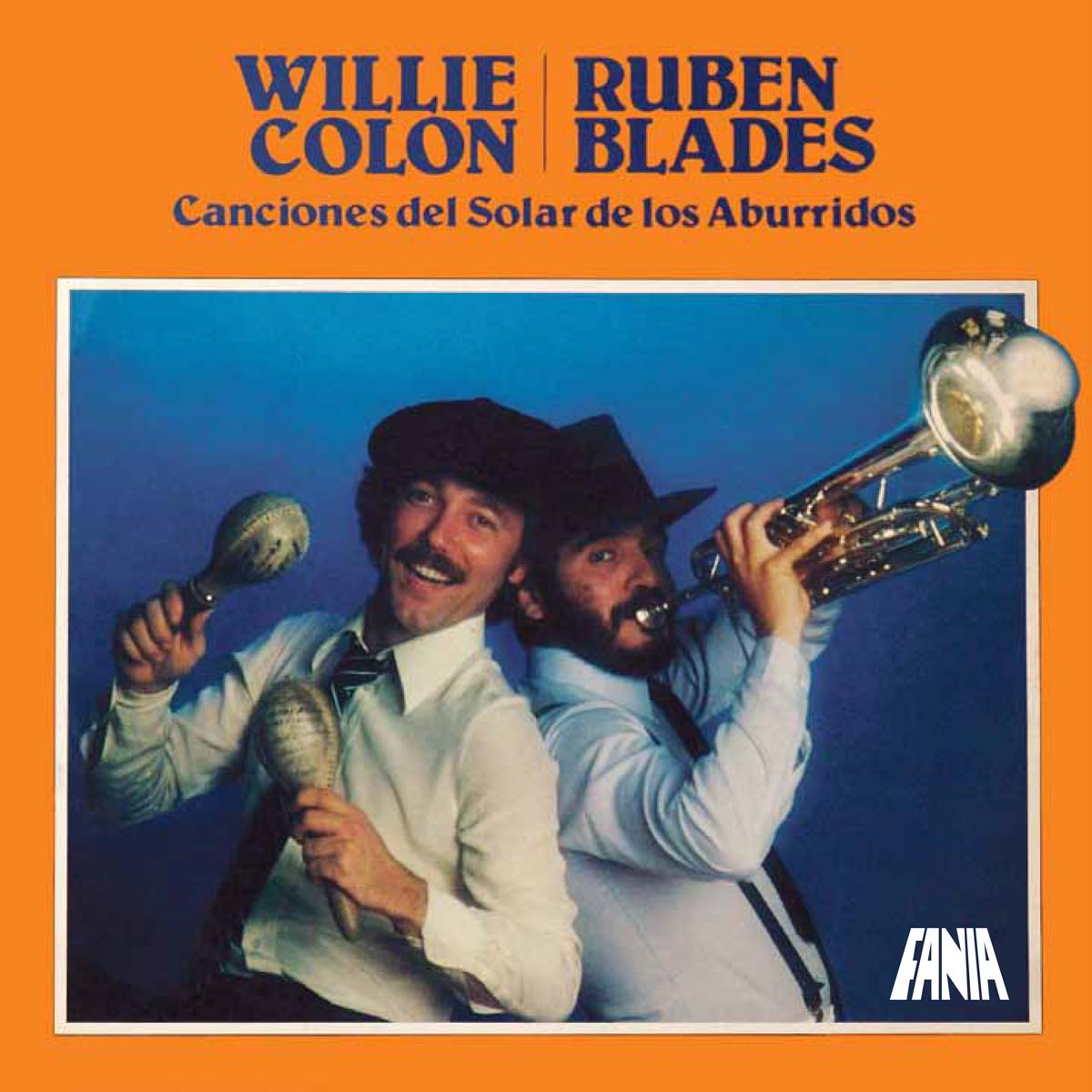
Willie Colón and Rubén Blades, the pioneers of what became known as “conscious salsa,” first encountered each other when Colón performed with his band in Blades’ native Panama in the late 1960’s. Blades resumed contact with Colón when he visited New York, courtesy of a cheap flight obtained from his brother who worked for an airline. During his stay there, he recorded De Panama a Nuevo York (1970, Alegre Records) with the Pete “Boogaloo” Rodríguez band.
It was not until after Blades had relocated to New York at the end of 1974 (via Miami, where his family was exiled in 1973) to initially work in the Fania Records mailroom that an opportunity arose to sing and compose a track on Colón’s album The Good, The Bad, The Ugly (1975, Fania Records). The award-winning song El Cazangero, a stirring indictment of repression in Latin America, heralded the tenor of their future collaborations, which began in earnest with the 1977 hit Metiendo Mano! on Fania. The album spawned the hit Pablo Pueblo, regarded by Blades as “the first (salsa) song that dealt with political and social overtones.”
Their record-breaking bestseller Siembra (1978, Fania) made them a new musical force, thanks to hits such as Pedro Navaja (perhaps his most famous composition: a reworking of Mack the Knife) and Plástico (a critique of artificial and shallow lifestyles and a call for Latino unity, hope and freedom) proving that salsa need not be formulaic escapism. The controversial two-disc concept album Maestra Vida (1980) about the lives of ordinary Latin Americans mixed songs and theatrical elements. “Willie brought in his producing talent, his insight into what people like to hear and how, and his arrangement ideas,” commented Blades about their marriage of talents. “I brought in the lyrics, the stories, the understanding of the Latin American from our position, not from the North, but from our perspectives. The combination proved successful and explosive.”
Their penultimate collaboration for Fania, the Grammy-nominated Canciones del Solar de los Aburridos (Songs From The Tenements Of The Bored; 1981), did not receive much air play in New York at the time of its release. This was largely due to deejays shying away from the opening cut Tiburón (literally meaning “Shark”; figuratively meaning “Imperialism”), arguably the duo’s most contentious recording commenting on U.S./Latin American policy. Composed by Blades, as were all but two of the tracks on the album, the song led to accusations that he was a communist sympathizer and effectively alienated him from the Cuban community in Miami. Incidentally, the snippet of a soca tune playing on the radio during the introduction of Tiburón is Indian Party by KD (Keith Dominic Len Raphael), a hit out of 1981 Trinidad Carnival.
Te Están Buscando tells a somewhat humorous everyday barrio story about a wary gambler dodging loan sharks literally baying for his blood. Conguero Milton Cardona, who joined Colón’s band in the early 1970’s, takes an awesome solo and trombone and violin player Louie Kahn, a stalwart of the Larry Harlow organization, and contributes charanga-style violin riffing to the all-trombone sound. Madam Kalalú is another comical piece about a fake spiritualist who relieves her client of his money and possessions.
El Telefonito, a song about avoiding pestering phone calls, has some nice trombone action. The delicate love song Y Deja (meaning: “And Let Me”) by the Cubans Gerardo Piloto and Alberto Vera is given a cool Brazilian samba groove and features an ethereal Stéphane Grappelli-esque violin solo from Louie Kahn. Blades’ composition Ligia Elena addresses racism through a tale about a white society debutant who falls for a black trumpet player. The concluding track, ¿De Qué?, has a joropo rhythm from Venezuela, where Colón and Blades acquired megastar status at the time.
Their final Fania outing together, 1982’s The Last Fight, was released in tandem with a motion picture of the same name, in which they both starred. Ominously titled, the movie was Fania Records Jerry Masucci’s attempt to break into the film industry, and it flopped badly. Colón and Blades later had a major falling out, and in fact, did not share a studio for their Grammy-nominated reunion project Tras La Tormenta (1995, Sony Tropical). They reunited in 2003 for the critically acclaimed Siembra 25th Anniversary Concert, packing Puerto Rico’s Hiram Bithorn Stadium with 27,000 fans.
Reflecting on his early days of performing “conscious salsa” with Blades, Colón said in 1991: “that type of composition caused us a lot of trouble, so much so that at one point when we were doing Pedro Navaja and Tiburón with Blades, we had to perform in bulletproof vests.”
Concept and Artistic Direction: Ruben Blades & Willie Colon
Arrangements: Ruben Blades, Willie Colon, Luis Cruz, Hector Garrido, Marty Sheller, Javier Vazquez
Participating Musicians: Johnny Andrews, Ruben Blades, Sam Burtis, Milton
Cardona, Willie Colon, Salvador Cuevas, Jimmy Delgado,
Andy Gonzalez, Reynaldo Jorge, Lewis Kahn, Jose
Rodríguez, Joe Santiago, Joe Torres.
Recorded at: Sound Works Studios & La Tierra Studios, New York
Engineers: Willie Colon & Jon Fausty
Assistants: Kevin Zambrana y Henry Monzon
Original Cover Design: Izzy Sanabria
for Latino Communications, Inc.
Designer: Jorge Vargas
Photographer: Lee Marshall
Hair Stylist for Willie Colon: James Perez
WAC PRODUCTION: Willie Colon & Ruben Blades for WAC Productions, Inc.
Written by John Child, contributor to Descarga.com.




